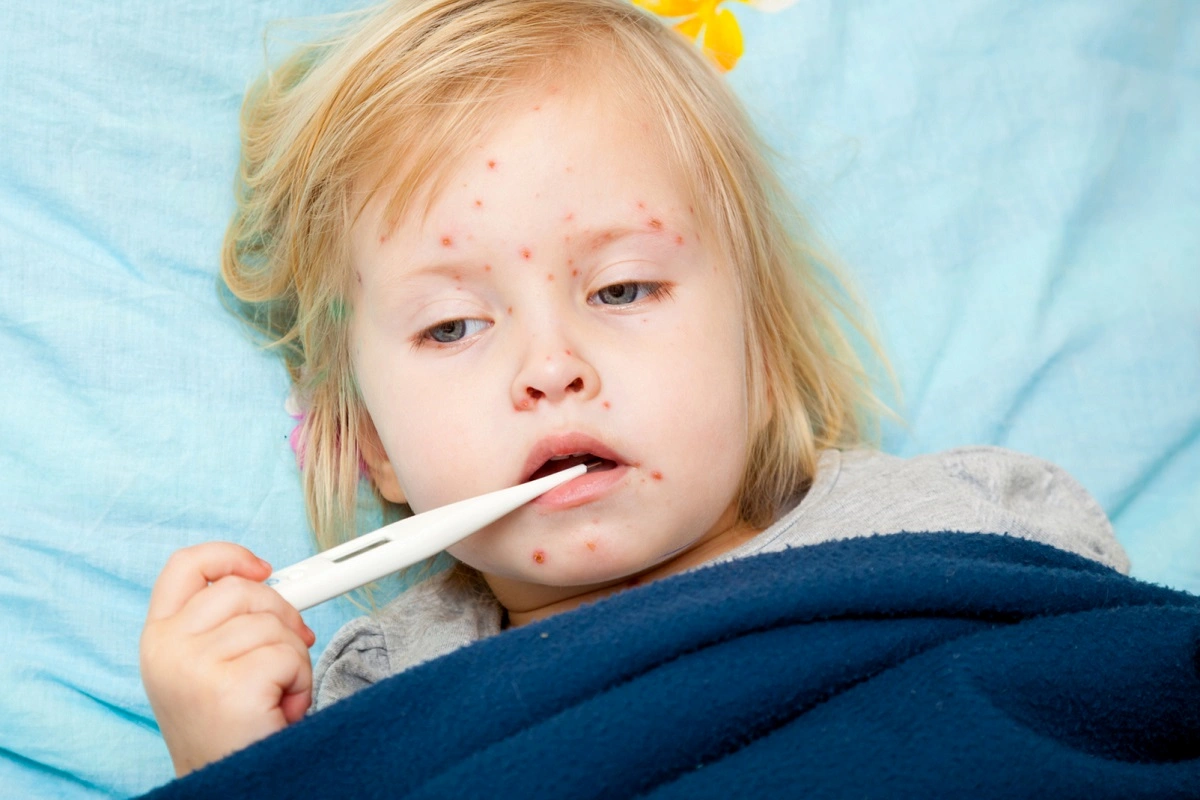Measles is caused by the paramyxovirus, contained in the cough or nasal secretions from an infected person. The Paramyxovirus is among the group of ribonucleic acid (RNA) viruses, which affect the respiratory system causing acute respiratory medical conditions. This virus is airborne and a person that has the disease can easily pass it to another person even though they are not in close proximity to them. Unlike the Influenza virus that replicates in the nucleus of the host cell, the paramyxovirus replicates in the cytoplasm. It contains one strand RNA, which programs six separate genes by repeating the encoding sequence of the RNA.
Symptoms of Measles
Measles is highly contagious and spreads easily from one person to another. The major way in which the disease gets into the body is through the respiratory tract. Once a person is infected, he or she will exhibit symptoms such as dry cough, diarrhea, skin rashes, fever, tearing of the eyes and feeling cold even in warm weather. The success rate of the paramyxovirus attack on a malnourished body or on one that has a low immunity is quite high. Other predisposing factors include bad feeding habits, direct contact with nasal secretions or cough from infected people and people suffering from Vitamin A deficiency.
Incubation Period
A person infected with Measles can contain it for 4 days before exhibiting the skin rash. During this time, the person can easily pass on the infection to some one else. A person’s potential to pass on the virus is still present 4 days after the rash has cleared. The incubation period usually lasts between 8 and 12 days. Measles has been widely curbed by the vaccine that offers protection to children against the virus. The vaccine is administered together with the Rubella and Mumps vaccines. It can also be combined with the Mumps, Chicken Pox and Rubella vaccine. Immunity against the paramyxovirus is attained either through vaccination or by getting the disease. A person that has suffered from Measles in the past cannot suffer a re-occurrence of the same.
A person with Measles will present symptoms that start with the Koplik’s Spot, which appears in the mouth and two days later, he/she will have evident rashes on the neck, face and head. The rash further spreads to other parts of the body starting with the abdomen, arms and the legs. The rash can either be itchy or not and lasts for at least five days. He/she may also develop nausea, vomiting and puffy lymph nodes.






